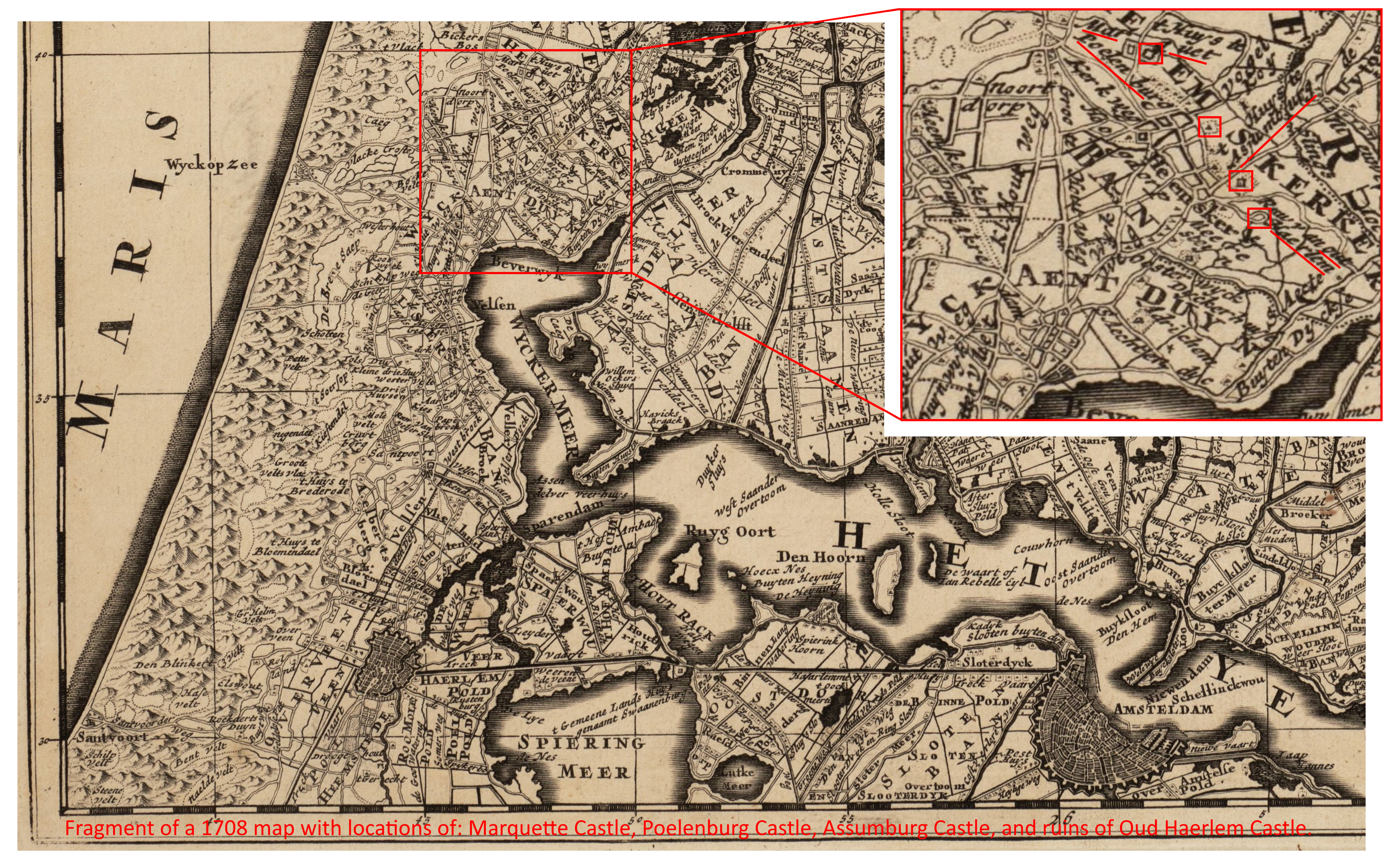|
Siege Of Geertruidenberg (1351–1352)
The siege of Geertruidenberg (1351–1352) was a long siege of Geertruidenberg Castle during the first of the Hook and Cod wars. Context Geertruidenberg and its castle In 1345, Geertruidenberg was part of the County of Holland. The town itself was well fortified and was important for the county, not in the least because it was closest to the County of Hainaut, which was in a personal union with Holland and Zeeland. Geertruidenberg was also important as a border town to protect Holland against the Duchy of Brabant. In 1323, Willem van Duvenvoorde got orders to build what would become Geertruidenberg Castle. About 5 kilometers to the south, Van Duvenvoorde also had the formidable Strijen Castle, his residence as Lord of Oosterhout. He connected the two by a paved road. Geertruidenberg Castle was a special kind of castle. It was owned by the Count of Holland, and kept by a castellan. The office of castellan was not unusual, but at Geertruidenberg Castle the castellan also ha ... [...More Info...] [...Related Items...] OR: [Wikipedia] [Google] [Baidu] |
Hook And Cod Wars
The Hook and Cod wars (; sometimes semi-anglicised as the wars of the Hoecks and the Cabbeljaws) comprise a series of wars and battles in the County of Holland between 1350 and 1490. Most of these wars were fought over who should hold the title of " Count of Holland". The Cod faction generally consisted of the more progressive cities of Holland. The Hook faction consisted for a large part of the conservative noblemen. The origin of the name "Cod" remains uncertain, but is most likely a case of reappropriation. Perhaps it derives from the Bavarian coat of arms, which resemble the scales of a fish. The ''Hook'' refers to the hooked stick that is used to catch cod. Another possible explanation of "Cod" points out that as a cod grows it tends to eat more, growing even bigger and eating even more, thus encapsulating how the noblemen perhaps saw the expanding middle classes of the time. Aftermath of William IV's reign (1345–1349) The reign of William IV of Holland and the w ... [...More Info...] [...Related Items...] OR: [Wikipedia] [Google] [Baidu] |
William I, Duke Of Bavaria
William I, Duke of Bavaria-Straubing (Frankfurt am Main, 12 May 1330 – 15 April 1389, Le Quesnoy), was the second son of Emperor Louis IV and Margaret II of Hainaut. He was also known as William V, Count of Holland, as William III, Count of Hainaut and as William IV Count of Zeeland. Biography In 1345 William's father was conferring Hainaut, Holland, Zeeland and Friesland upon his wife Margaret, and shortly later also upon their son William. After his father's death in 1347, William ruled Bavaria, Holland and Hainaut together with his five brothers until 1349. With the first division of the Wittelsbach possessions in 1349 he received Hainaut, Holland and Lower Bavaria together with his brothers Stephen II and Albert I. After the next division of Bavaria in 1353, he ruled together with his younger brother Albert I in Bavaria-Straubing, Holland and Hainaut. William had engaged in a long struggle with his mother Margaret, obtaining Holland and Zeeland from her in 1354, an ... [...More Info...] [...Related Items...] OR: [Wikipedia] [Google] [Baidu] |
Zierikzee
Zierikzee () is a small city in the southwest Netherlands, 50 km southwest of Rotterdam. It is situated in the municipality of Schouwen-Duiveland, Zeeland. The city hall of Schouwen-Duiveland is located in Zierikzee, its largest city. Zierikzee is connected to Oosterschelde through a canal. In 2001, the town of Zierikzee had 10,313 inhabitants. The built-up area of the town was 3.0 km2, and contained 4,295 residences.Statistics Netherlands (CBS)''Bevolkingskernen in Nederland 2001'' (Statistics are for the continuous built-up area). The statistical area "Zierikzee", which also can include the surrounding countryside, has a population of around 10,730.Statistics Netherlands (CBS)''Statline: Kerncijfers wijken en buurten 2003-2005''. As of 1 January 2005. History Zierikzee, then located on the island of Schouwen, received city rights in 1248. In 1304, a fleet commissioned by the French and Dutch defeated a Flemish fleet in the naval Battle of Zierikzee. Modern history On ... [...More Info...] [...Related Items...] OR: [Wikipedia] [Google] [Baidu] |
County Of Zeeland
The County of Zeeland () was a county of the Holy Roman Empire in the Low Countries and it later became one of the seven provinces of the Dutch Republic. It covered an area in the Scheldt and Meuse (river), Meuse delta roughly corresponding to the modern Dutch provinces, Dutch province of Zeeland. The County of Zeeland did not include the region of Zeelandic Flanders which was part of County of Flanders, Flanders; conversely, the modern Province of Zeeland does not include Sommelsdijk, historically part of the County of Zeeland. History Historically the area was often under the influence of its stronger neighbors, the County of Holland, the County of Hainaut and the County of Flanders. In 1012 Emperor Henry II, Holy Roman Emperor, Henry II the Saint enfeoffed the France in the Middle Ages, French count Baldwin IV, Count of Flanders, Baldwin IV of Flanders with Zeeland after which both counties were ruled in personal union, contested by northern Holland from the beginning. In 116 ... [...More Info...] [...Related Items...] OR: [Wikipedia] [Google] [Baidu] |
John I, Lord Of Polanen
John I, Lord of Polanen ( – 26 September 1342) was Lord of Polanen, and Lord of De Lek. Life John was a son of Philips III van Duivenvoorde (?-c. 1308) and Elisabeth van Vianen. Philips got the fief Polanen in Monster, South Holland in 1295. This was made inheritable by sons and daughters. John had a sister Kerstine and a bastard brother Willem van Duvenvoorde. Lord of Polanen Upon the death of his father, John I became Lord of Polanen Castle. In his early years, John got help from his uncle Diederik van der Wale. In 1311 John got possession of a windmill in Monster. In the early 1320s he got possession of tithes in Monster, Delft, Maasland, and Schipluiden. The help of his half-brother helped John a lot. In 1326, he got the lordships of Krimpen aan de Merwede, Krimpen aan den IJssel, Ouderkerk, and Zuidbroek in pawn. Lord of Heemskerk In 1327 John bought Oud Haerlem Castle and the lordships () of Heemskerk and Castricum. The price was only 100 pounds. In 132 ... [...More Info...] [...Related Items...] OR: [Wikipedia] [Google] [Baidu] |
Muiden Castle
Muiden Castle (Dutch: ''Muiderslot'', ) is a castle in the Netherlands, located at the mouth of the Vecht river, some 15 kilometers southeast of Amsterdam, in Muiden, where it flows into what used to be the Zuiderzee. It is one of the better known castles in the Netherlands and featured in many television shows set in the Middle Ages. History Floris V The history of Muiden Castle begins with Count Floris V who built a stone castle at the mouth of the river in 1280, when he gained command over an area that used to be part of the See of Utrecht.A.T.E. Cruysheer, ''Het Muiderslot; een archeologische begeleiding en een historische interpretatie, Jaarboek 2005 van de Archeologische afdeling Naerdincklant'', pp. 48-55 The Vecht river was the trade route to Utrecht, one of the most important trade towns of that age. The castle was used to enforce a toll on the traders. It is a relatively small castle, measuring 32 by 35 metres with brick walls well over 1.5 metres thick. A large moat s ... [...More Info...] [...Related Items...] OR: [Wikipedia] [Google] [Baidu] |
Radboud Castle
Radboud Castle (Dutch: ''Kasteel Radboud'') is a castle on the east bank of the harbour in Medemblik. Radboud Castle is one of a number of castles in North Holland. The building was commissioned by Floris V, Count of Holland. When exactly it was built is unknown, but the castle was completed before the St. Lucia's Flood of 13 December 1287. On 24 June 1517 the castle saved some of the Medemblik townsfolk from the raids of Grutte Pier and his Arumer Zwarte Hoop (a band of marauding pirates). On 12 August 1588 the castle surrendered to Diederik Sonoy and the Geuzen. The defensive function of the castle was reduced with the building of walls around the city of Medemblik in 1572 and due to both dismantling and lack of maintenance there was attrition of the castle buildings. Restoration In 1889 the control of the property was returned to the state. Restorations were done by the State architect J. van Lokhorst with advice from R.J.H. Cuypers and the castle was used for the district ... [...More Info...] [...Related Items...] OR: [Wikipedia] [Google] [Baidu] |
Vreeland
Vreeland () is a village in the Dutch province of Utrecht. It was a part of the former municipality of Loenen. Since 2011 it has been part of the new formed municipality of Stichtse Vecht. It is located on the river Vecht, about 2 km north of Loenen aan de Vecht. It received city rights in 1265. In 2015, the village celebrates the 650th year of its foundation. Vreeland is on the provincial road Vinkeveen-Hilversum (N201). Until 1964, Vreeland was a separate municipality. In 2001, the village of Vreeland had 1339 inhabitants. The built-up area of the village was 0.30 km2, and contained 557 residences.Statistics Netherlands (CBS)''Bevolkingskernen in Nederland 2001'' (Statistics are for the continuous built-up area). The statistical area "Vreeland", which also can include the peripheral parts of the village, as well as the surrounding countryside, has a population of around 1600.Statistics Netherlands (CBS)''Statline: Kerncijfers wijken en buurten 2003-2005'' As of 1 ... [...More Info...] [...Related Items...] OR: [Wikipedia] [Google] [Baidu] |
Oud Haerlem Castle
Oud Haerlem Castle was a very strong castle in Holland. In 1351 it was demolished after a long siege. Location The location of Oud Haerlem castle is on the eastern fringe of what is now Heemskerk, just west of Amsterdam. It is 400 meter south-southeast of Slot Assumburg, Assumburg Castle, which probably also dates from the thirteenth century, but was much smaller at the time. Somewhat further north northwest of Assumburg was Poelenburg Castle, of which nothing remains. About three kilometer north northwest of Oud Haerlem is Marquette Castle, which used to be called Heemskerk Castle. Marquette Castle was a large round water castle, of which only later, more square parts remain. The unusually high concentration of castles in the area has been related to the contemporary geography of the area. The 1708 map still shows how the IJ reached far inland in medieval times. It continued in the now disappeared Wijkermeer, and left only the dunes and a very narrow strip of land to connect ... [...More Info...] [...Related Items...] OR: [Wikipedia] [Google] [Baidu] |
Groot Poelgeest
Groot () is a character appearing in American comic books published by Marvel Comics. Created by Stan Lee, Larry Lieber and Jack Kirby, the character first appeared in ''Tales to Astonish'' #13 (November 1960). An extraterrestrials in fiction, extraterrestrial, sentient tree-like creature, the original Groot first appeared as an alien invasion, invader that intended to capture humans for experimentation. The character can only say the repeated line "I am Groot", but this can have different meanings depending on context. In the Marvel Cinematic Universe (MCU) franchise, Peter Quill (Marvel Cinematic Universe), Star-Lord, Thor (Marvel Cinematic Universe), Thor, Rocket Raccoon (Marvel Cinematic Universe), Rocket Raccoon, Gamora (Marvel Cinematic Universe), Gamora, Drax (Marvel Cinematic Universe), Drax the Destroyer and, eventually, Nebula (Marvel Cinematic Universe), Nebula, daughter of Thanos are able to understand him. The character was reintroduced as a heroic, noble being in 200 ... [...More Info...] [...Related Items...] OR: [Wikipedia] [Google] [Baidu] |



